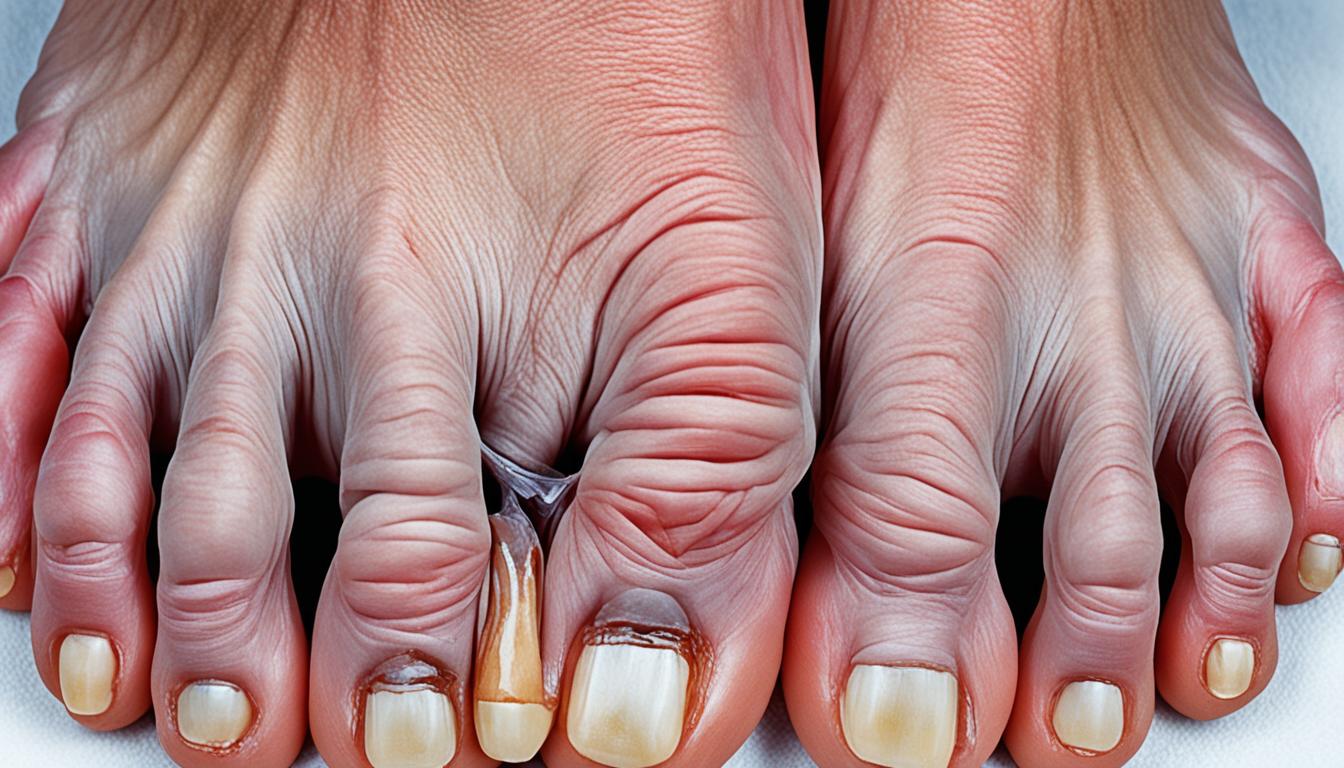Mallet toe and hammertoe are toe deformities that can be very painful. They happen when toes bend downward, looking like a hammer or mallet. This can be due to tight shoes, injury, or unusual toe muscles. People of any age may suffer from this condition.
Issues with foot mechanics may also increase the risk of mallet toe and hammertoe. So, watching how you walk and the pressure on your toes matters. Factors like age, gender, toe length, diseases, and family history are also important. Women often face these problems more than men.
Signs of mallet toe and hammertoe are pain, stiffness, and problems moving the toes. Without treatment, you might get blisters, corns, or calluses.
If you notice these symptoms, see a podiatrist or orthopedic specialist. They will check your toes and suggest the right treatment. This depends on how bad the deformity is.
Treatments can be surgery or not. Non-surgical options include toe muscle exercises and wearing proper shoes. Orthotic devices and toe splints can also help. But, in bad cases, you might need surgery.
Stem cell therapy is a new way to treat mallet toe and hammertoe. Stem cells help the body heal and repair. They can make healing faster and maybe better.
Key Takeaways:
- Mallet toe and hammertoe are common and can be very painful.
- Tight shoes, injury, or unique toe muscles can lead to these conditions.
- Age, gender, toe length, diseases, and family history are key risk factors.
- Exercise, good shoes, and orthotic devices can ease the pain.
- In severe cases, surgery or stem cell therapy might be needed.
Causes and Risk Factors of Hammer Toe and Claw Toe
Hammer toe and claw toe are toe problems that can hurt a lot. They happen because of tight shoes and certain health issues.
Ill-fitting Footwear
Wearing shoes that don’t fit well is a big cause of these toe issues. Tight or narrow shoes can push toes into bad positions. This makes these toe problems more likely. People who wear high heels or shoes with narrow, pointed toes are at risk.
Medical Conditions
Health problems like arthritis and diabetes can make getting hammer toe and claw toe more likely. Arthritis can hurt the joints and make toes bend wrong. Diabetes can harm nerves and reduce blood flow in the feet, leading to toe deformities. Other issues like nerve damage and some brain disorders can also affect the feet.
Tackling these causes and risks is key to avoiding or reducing toe problems. Getting diagnosed and treated early can greatly help people with these issues.
Prevention and Management
Choosing the right shoes is important to prevent toe deformities. Shoes should not squeeze the toes and should have good support. Avoiding high heels and narrow shoes is smart.
Controlling health issues like arthritis and diabetes is also important. Regular check-ups with foot experts can stop problems from getting worse.
There are ways to deal with hammer toe and claw toe without surgery. Using special devices, doing exercises, and adding cushioning can help. But if these don’t work, surgery might be an option.
Diagnosis and Treatment
When non-surgical steps don’t help, or if the problem is severe, surgery might be needed. The goal of surgery is to fix the problem and make the toes straight again. The surgery method used depends on how bad the problem is and the person’s health.
In conclusion, hammer toe and claw toe can come from bad shoes or health issues. Smart prevention and care can stop or reduce these problems. Surgery is a last resort for severe cases, aiming to make the foot work better and stop pain.
Hammer Toe Surgery and Treatment in Irvine
Hammer toe surgery fixes toes that are deformed. It’s mostly done on the second, third, or fourth toe. Surgeons use different methods, like moving tendons, cutting the joint, or adding screws. The main aim is to straighten the toe and reduce any pain.
Symptoms of hammer toe are pretty noticeable. You might see a toe that’s bent upwards, and it can’t easily be straightened out. Over time, you could also get corns, blisters, or calluses. These issues often come from shoes that are too tight or if your toe bones are long. Certain health problems like arthritis or bunions can also be at fault.
In Irvine, there’s a top clinic for treating foot problems, including hammer toe. They have lots of ways to help, like surgery, stem cell treatments, or special shoe inserts. These are all designed to fit your exact needs.
If your toes are causing you trouble, it’s smart to see a podiatrist. They can figure out why your toes are the way they are and make a plan just for you. The experts in Irvine will do their best to help fix your toe problems.

